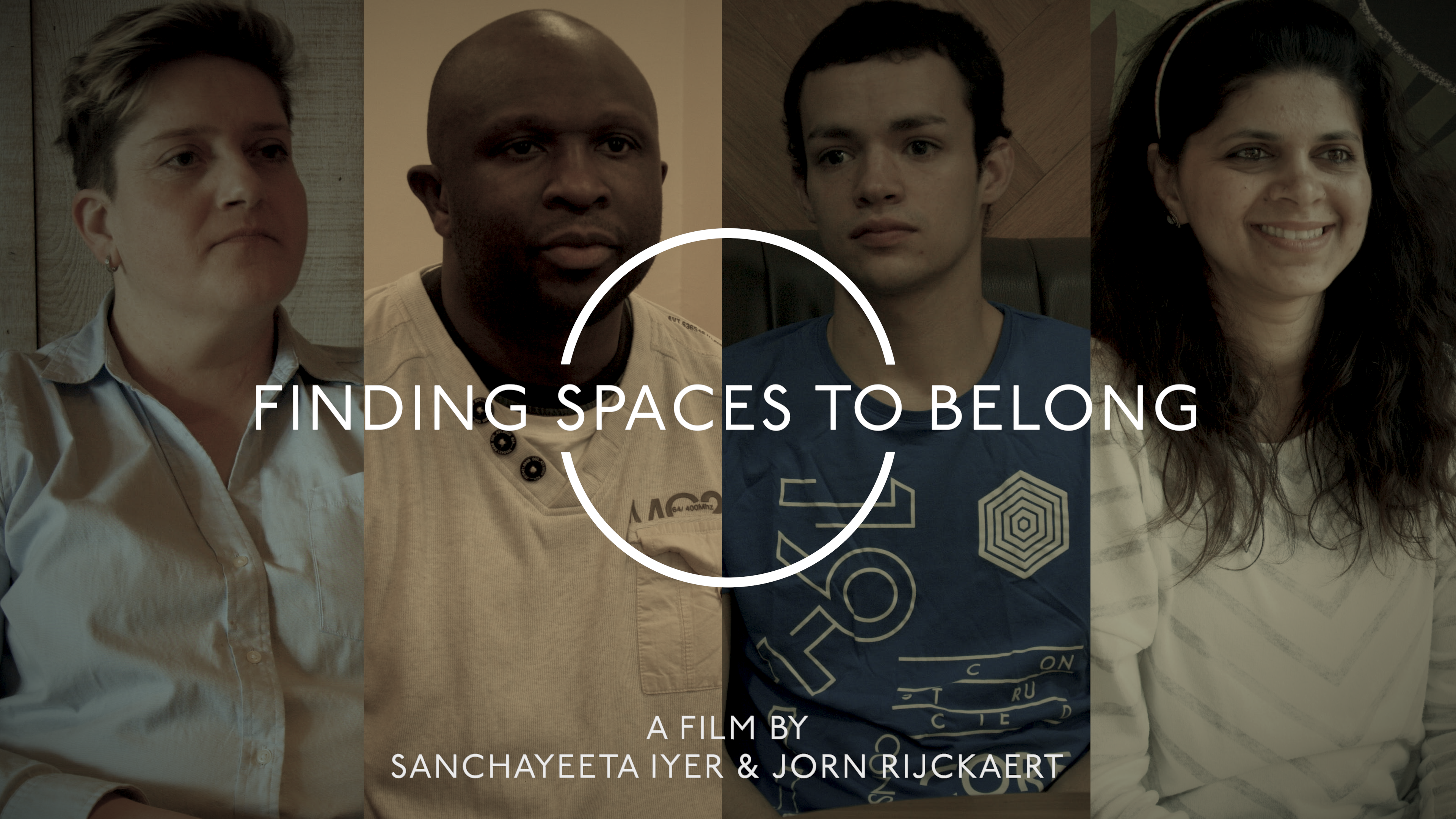Finding Spaces to Belong is an hour-long ethnographic documentary film that delves into the lives of four deaf migrants navigating their way in London. From Lenka, a Czech au pair keen on improving her English, to Samba, who was brought over from Sierra Leone at 13 for better education opportunities; from Luis, who traveled from Guatemala in search of academic avenues, to Sana, who journeyed from Mumbai to start a life with her newlywed husband. Each has embarked on a unique journey to the city, marked not only by personal aspirations but also by encounters with racism, xenophobia, and homophobia. These challenges, alongside their individual tales, weave a rich tapestry of the quest for spaces where they genuinely feel “at home”—be it in physical locations or within new relationships. Beginning in April 2019, the film captured their stories. However, events like COVID-19 and Brexit shifted their perspectives. By April 2023, when we revisited them, their notions of belonging had evolved. The film underscores that “belonging” isn’t a fixed destination, but a journey perpetually in flux. As each protagonist finds solace in diverse settings, from churches and local eateries to groups of queer friends and pubs, their understanding of “home” is fluid, ever shaped by their life experiences and the dynamic social and political landscapes they navigate.
How did you find protagonists for the film?
When collaborating with Steve Emery in the first stage of planning the film, we quickly realized that getting people to participate wasn’t always easy. Many wanted to keep their stories private, but thankfully, some were open to sharing on camera. To find our protagonists, I reached out to contacts from my network, such as from previous workplaces. A few people pointed us in the direction of potential participants. Camera operator Jorn Rijckaert and I also met some people naturally when we were planning the film, in places familiar to the deaf community in London. When we began, Jorn and I thought we’d have more than four people in our film, and we interviewed a good number back in 2019.
How did you shortlist protagonists for the final film?
At first, we aimed to feature 6 protagonists in an hour-long documentary. However, we realized that shortlisting to four protagonists would allow us to delve deeper into each of their stories. This decision also allowed us to explore the evolution of their narratives over a time span of four years, giving them more space in the film. Even though we limited the number of stories to four, it was important for us to represent diverse experiences. So, we selected protagonists based on a variety of factors, including their sexuality, ethnicity, country and continent of origin, gender, religion, the reason they moved, and language background, ensuring a rich diversity of perspectives.
How did you decide on the theme of the film?
We conducted two interviews with each participant. During the initial round of filming in 2019, we asked them to talk about their experiences moving to the city. They were asked a set of specific questions: their reasons for relocating, their first impressions of the country, their journey with learning a new language, encounters with the deaf community, and any instances of barriers or discrimination they faced. From these discussions, a recurring theme of ‘belonging’ emerged. This theme also resonated with findings from other sub-projects within MobileDeaf, including themes from my Ph.D. work. With this insight, even though the initial interviews covered a broader spectrum of experiences, we chose to zoom in on stories centered around the sense of belonging. We settled on this thematic focus before the second round of interviews in 2023. During these subsequent interviews, we explored how Brexit and the pandemic had influenced feelings of belonging in London. We also let the protagonists watch and comment on excerpts from their 2019 interviews, specifically those segments addressing belonging, which we had edited together. This approach helped us navigate the direction of the film towards the central theme of belonging.
How does this film differ from the other MobileDeaf films?
While both Annelies’ film series, “This is IS”, and Erin’s film, “#deaftravel”, aim to capture real-time observations of deaf individuals interacting and communicating with each other, Finding Spaces to Belong takes a different approach. It delves more into the past, centering on the stories of four protagonists as they recount their early experiences navigating the city of London. The emphasis of this film is on interviews and personal narratives about their encounters with the deaf community and their journeys to find spaces where they felt a sense of belonging. Additionally, we made Finding Spaces to Belong in London, the city where I grew up, offering a different backdrop compared to Erin and Annelies who filmed in other countries than their own.
What challenges did you face when making the film?
Permissions: In London, you need a permit to film in public areas. Given that our project wasn’t a large TV production but a modest academic one, we did not feel the need to apply for a permit at the city council. But we had to be careful and strategic about our camera use. We sought and obtained permissions for venues like City Lit and Costa Coffee shop. Getting permission for filming at the Shakespeare’s Head pub posed a challenge. Given the short notice we had and the fact that these gatherings are only once a month, we had to be quick and flexible in our approach. Jorn decided to use his iPhone to film discreetly in the pub. Although lighting was an issue, Jorn’s expertise came in handy, and we managed to capture some valuable footage.
Public perception and camera size: Another challenge was public sentiment towards being filmed. When we filmed at City Lit during Deaf Day in 2019 with a large camera, we were frequently questioned, making the experience uncomfortable. In contrast, during Deaf Day in 2023, Jorn used a smaller camera, resembling a photo camera, which felt less intrusive to the attendees. This experience highlighted how camera size can significantly influence people’s reactions.
COVID-19 and participant availability: The pandemic inevitably delayed the film’s completion. We had to reconnect and coordinate with our selected participants for the second round of filming. Although we managed to arrange the second interviews with Luis, Lenka and Samba at City Lit, Sana couldn’t attend due to her advanced pregnancy. Fortunately, we managed to film her at a later time, just before she delivered her baby!
Changing minds: After filming, some participants had second thoughts about their inclusion, leading us to edit them out.
Despite these challenges, the final product exceeded my expectations. We were successful in bridging the experiences and stories between the two sets of interviews. Additionally, we captured changes in people’s signing over time, particularly Sana’s transition towards BSL.
How did COVID-19 impact the process of making the film?
Our filming journey started in 2019, but come 2020, everything changed. The onslaught of lockdowns and stringent social distancing measures put our project on hold. Personally, I also navigated the journey of pregnancy and delivering a baby that year, further extending our pause. As 2022 approached and both Erin’s and Annelies’ films were rounding off their edits, we revisited our project. The pause allowed us to contemplate how our protagonists’ sense of belonging might have shifted due to the pandemic’s influence. To our relief, the protagonists were eager to be involved for second interviews. This provided us an opportunity to witness their transformations. For instance, Sana and Luis had been in the UK for less than a year during our first round of interviews. By the second time we spoke, they had lived there for nearly five years. This time-lapse enriched our narrative. In a way, COVID-19 granted us a unique lens, giving our film a renewed focus on the evolving stories of belonging.
How did you decide the length of the film?
Although Erin’s and Annelies’s films extend beyond an hour, largely due to their format that combines real-time observation with interviews, Finding Spaces to Belong is tailored differently. It primarily focuses on the four protagonists recounting their initial experiences of living and engaging with others in the city. We felt an hour was the ideal duration to retain the audience’s attention and effectively convey the stories.







